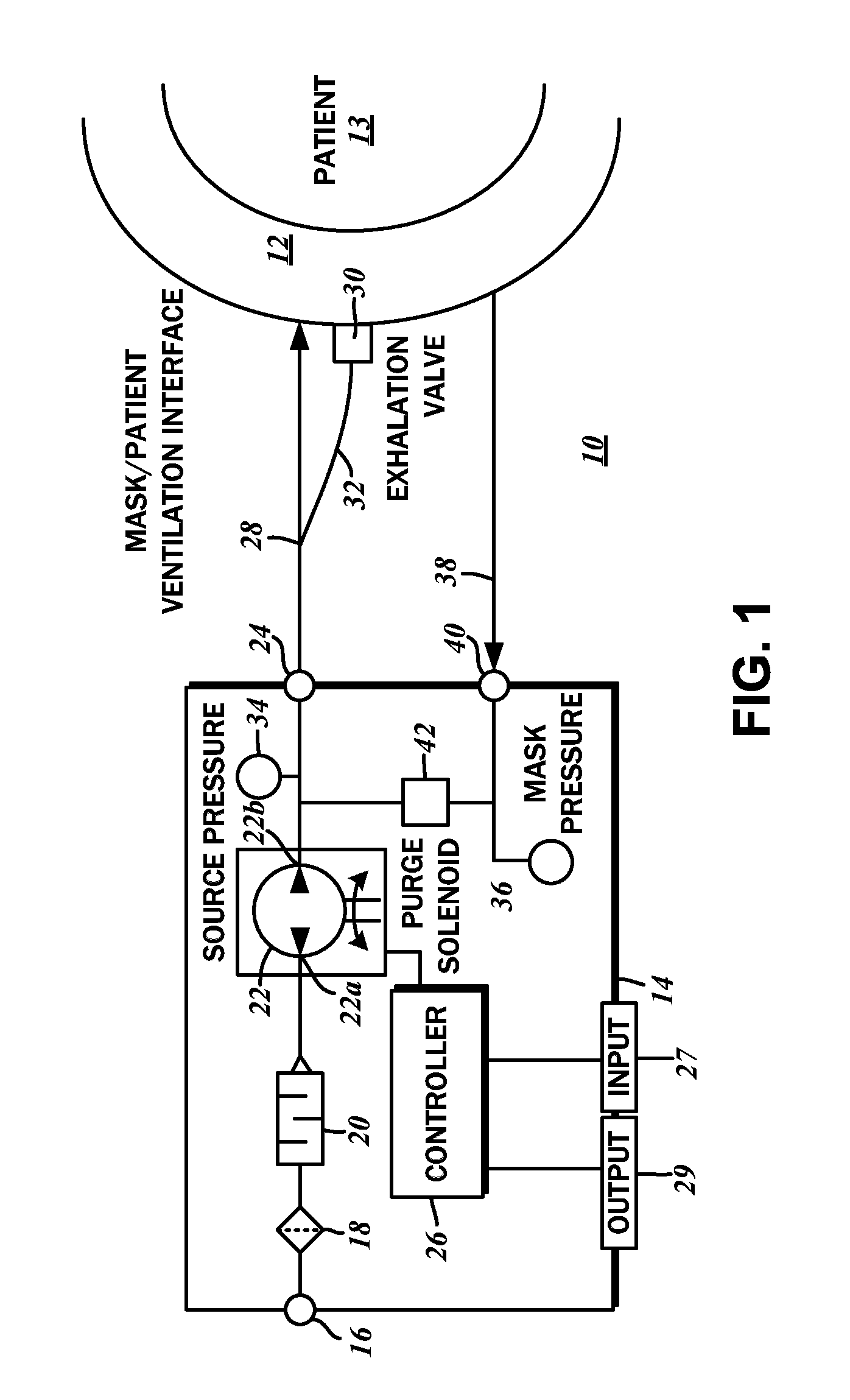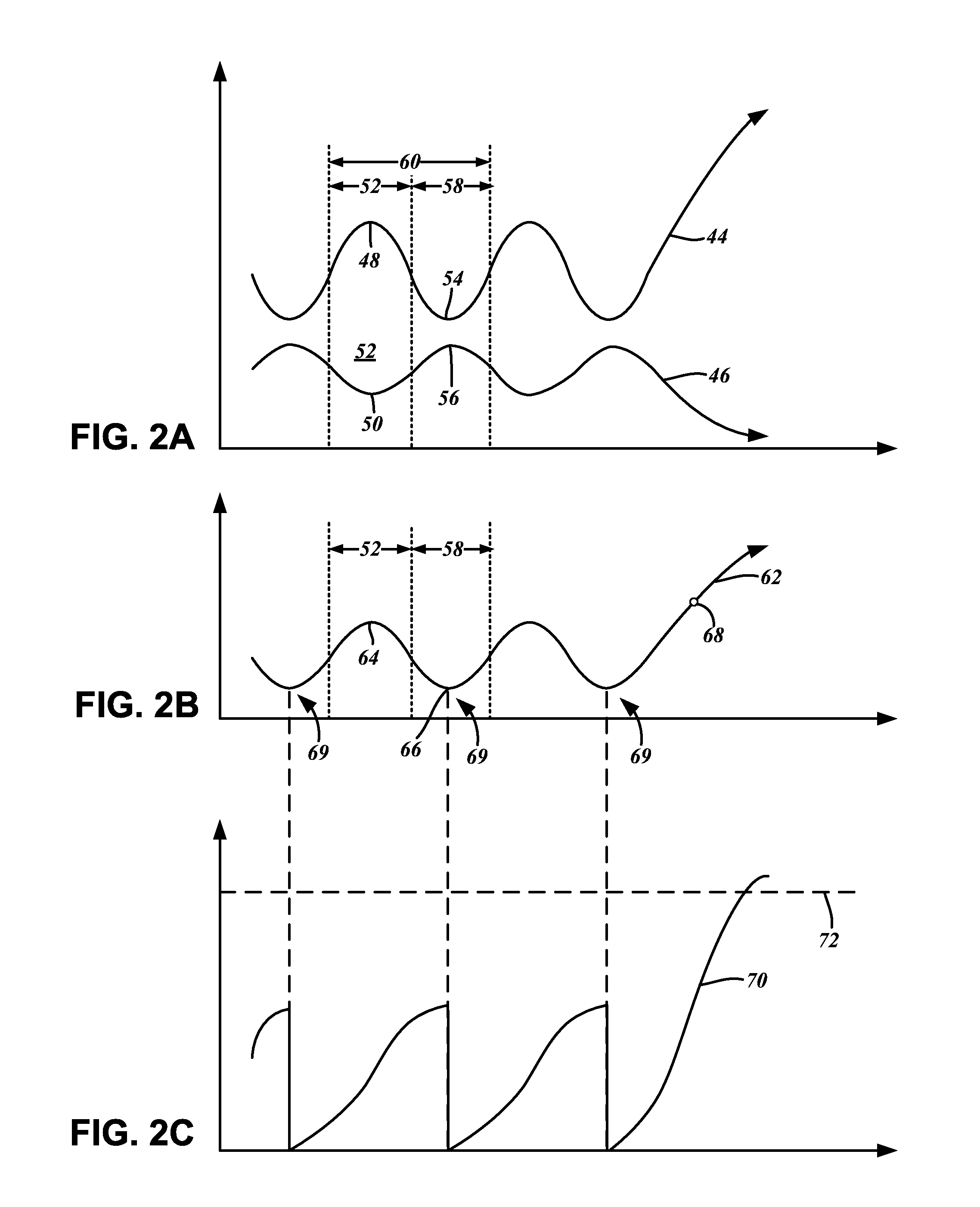Detection of Patient Interface Disconnect for Controlling Continuous Positive Airway Pressure Therapy
a technology of positive airway pressure and patient interface, which is applied in the field of respiratory conditions, can solve the problems of reduced blood oxygen saturation, earlier patient breathing assistance devices tended to be uncomfortable to use, and the sense of asphyxiation
- Summary
- Abstract
- Description
- Claims
- Application Information
AI Technical Summary
Benefits of technology
Problems solved by technology
Method used
Image
Examples
first embodiment
[0039]With reference to the flowchart of FIG. 3, a method for detecting a patient disconnecting from the airway support device 10, which can also be referred to as a CPAP therapy device, includes a step 300 of calculating a pressure difference signal / discrete values between the measurements from the source pressure sensor 34 and the patient interface pressure sensor 36. This step may also be referred to as deriving a cyclical pressure difference signal. FIG. 2B illustrates an example pressure difference signal, shown as a third plot 62. The greatest pressure difference between the signal from the source pressure sensor 34 and the signal from the patient interface pressure sensor 36 occurs during the aforementioned patient inspiratory phase 52, and corresponds to a crest or peak 64. On the other hand, the least pressure difference between the signal from the source pressure sensor 34 and the signal from the patient interface pressure sensor 36 occurs during the patient expiratory pha...
second embodiment
[0048]Beyond integrating the pressure different signal, however, the method contemplates calculating a slope 71 of the integral of the pressure difference signal. This may be determined by a magnitude increase 72 in the integral over a time duration TH as in a step 408. The patient is deemed to have disconnected when the slope 71 remains above a predefined threshold for more than a predefined duration. Once these two conditions are evaluated to exist in the decision block 408, the patient disconnect 68 is identified, and the pressure source 22 is deactivated according to a step 406.
PUM
 Login to View More
Login to View More Abstract
Description
Claims
Application Information
 Login to View More
Login to View More - R&D
- Intellectual Property
- Life Sciences
- Materials
- Tech Scout
- Unparalleled Data Quality
- Higher Quality Content
- 60% Fewer Hallucinations
Browse by: Latest US Patents, China's latest patents, Technical Efficacy Thesaurus, Application Domain, Technology Topic, Popular Technical Reports.
© 2025 PatSnap. All rights reserved.Legal|Privacy policy|Modern Slavery Act Transparency Statement|Sitemap|About US| Contact US: help@patsnap.com



